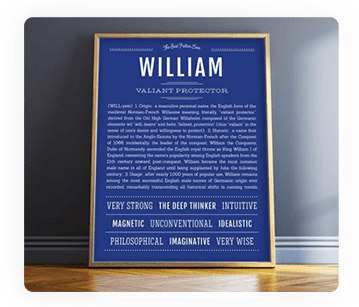Historic Figures
WITH THE NAME FRANCIS
St. Francis of Assisi was born Giovanni di Pietro di Bernardone (nicknamed “Francescoâ€) to a wealthy Italian family. In his youth he indulged in the usual antics common to a 12th century carefree young man, but a serious illness apparently gave him time to ponder the nature of his soul. He soon began the ministry that would last his lifetime, that of preaching, renouncing material possessions, embracing chastity and endeavoring to love all God’s creatures, human and non. Pretty big order! So an order he founded – the Franciscans, along with a cloistered order for women, the Poor Clares. Legend is rather difficult to separate from fact, but St. Francis is credited with introducing the Nativity Scene as a fixture at Christmas time, as well as having received the stigmata – the wounds of Christ’s crucifixion. (Well, perhaps that’s a bad example of legend versus fact.) In his day, Francis apparently also traveled to Egypt in an unsuccessful effort to convert the sultan non-violently (as opposed to the methods of the “Holy†Crusades). Francis was declared a saint within a couple of years of his death; today he is one of the most beloved figures in this sanctified pantheon, and is closely associated with an abiding love for animals. The current Catholic pope, Jorge Bergoglio, honored him by taking his name upon his election as Pope Francis. We hope it proves to be as popular as Leo and Pius!
Sir Francis Drake was hands-down the most renowned seaman of the Elizabethan Age. Born in England, Drake’s father abandoned the family and young Francis was brought up among relatives in Plymouth who combined vocations as merchants and pirates. He enlisted in the family fleet by the time he was 18 and participated in the seizing and plundering of ships off the French coast. By his late 20s, Drake was in command of his own ship involved in slave-trading in the Spanish colonies of the Caribbean. Not the most honorable of starts in the world, his lowly beginnings would forever make him disrespected by his other “well-born†contemporaries. A couple of bad experiences with the Spanish during Drake’s voyages to the West Indies made him vow for revenge and retribution; the Spanish would become his archenemies forever. This brought him to the attention of the Queen who would finance his next voyage and give him implicit permission to plunder away. Drake set sail for America set on Panama where he successfully attacked a silver-bearing mule train which made him both famous and rich. On this trip he also viewed the Pacific Ocean from Panama and became intent upon sailing an English ship on those seas. In 1577 he was chosen to lead a circumnavigation expedition financed by the Queen Elizabeth herself which he also used as a successful pirating adventure that made his future fortune permanent. He would return three years later in 1580 on his ship the Golden Hind (nee Pelican) and Queen Elizabeth came aboard to knight him. He was also made mayor of Plymouth. As hostilities broke out again with Spain, Elizabeth would call on him to “impeach the provisions of Spain.†With a fleet of 30 ships, Drake stormed the Spanish harbor of Cádiz and destroyed critical vessels and supplies meant for the Armada. This action would weaken the Armada in their later battles with the English, thus helping the English to defeat them. In summary, Drake was a fearless if ethically questionable man. It’s no surprise that the Spaniards referred to him as Franciscus Draco, or 'Francis the Dragon.'
Saint Francis Xavier was born into a noble and wealthy family in Xavier, Spain in the Basque Kingdom of Navarre. He was highly educated in Paris where he first met Ignatius of Loyola. Together with five others, the two would go onto found the Society of Jesus (known as the Jesuits), a religious order of men who followed the teachings of the Catholic Church which was recognized and approved by Pope Paul III in 1540. Xavier spent most of his life on missionaries spreading Catholicism in countries such as Mozambique and India, and stretching way out into Asia.



